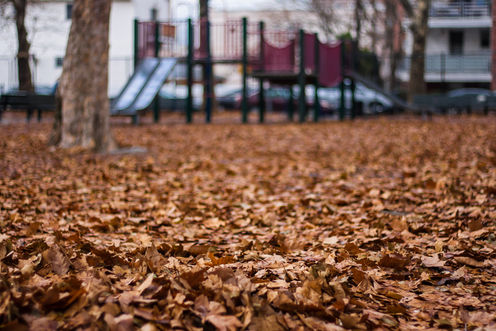
If we could go back 100 years in a time machine, what would kids be like? They’d be shorter, leaner, probably dirtier and less well-fed — but would they be fitter?
It turns out we actually have a beautiful window on the past. In 1919, a young woman named E.M. Bedale started postgraduate research at University College London, an uncommon undertaking for a woman at that time. Her studies focused on energy balance in children, which led her to spend several years at a serendipitously eponymous school called Bedales in rural Hampshire.
During her two years at Bedales, Miss Bedale measured the energy expenditure and intake of the school’s students, using methods that are still considered to be gold standards today.
Her data provide a startling contrast to our time. Children from almost 100 years ago were 50% more active than kids today. They accumulated over four hours more of physical activity and sat for three hours less than today’s kids – every day.
Clearly, we’re now in the grip of an inactivity epidemic.
A shrinking world
Consider, the global decline in kids walking or cycling to school. In 1970, almost 70% of Australian kids walked or cycled to school. Today, this proportion is barely 25%. The trend is similar in the United Kingdom, Brazil, Switzerland, the United States and Canada.
In some ways, sports participation is going the same way. While overall yearly participation in sport is increasing, kids are playing fewer different kinds of sports. In 1985, 40% of Australian children played three or more sports every year. By 2000, only 11% of children reported playing this number of sports within the same period.

Free play — climbing trees in the backyard, mucking around in parks or bushland, informal ball games — is also declining.
In 1957, 12 to 14-year-old kids were asked to nominate their favourite play spaces. Four out of five boys and three out of five girls nominated outdoor spaces (parks, backyards, the local creek). When the survey was repeated in 2000, only 35% listed outdoor spaces.
In the 1960s, 83% of kids were allowed to play unsupervised in the neighbourhood. When those kids from the 1960s grew up and became parents, only 25% allowed their own children to play unsupervised in the neighbourhood.
Not just kids
Australia is not alone. There are other signs of a global collapse in physical activity too. Worldwide, children’s fitness has been declining at the rate of 3% to 5% per decade since 1970. And Australian kids are now in the bottom third of the world in fitness.
Australia finished second last in the Global Report Card on Kids’ Physical Activity released earlier this year, which showed data from 15 countries. (Thank goodness for the Scots, who finished last.)
We’re third worst in terms of screen time – television, computers and videogames. And it’s not just kids.
In the 1960s, half the jobs in private industry in the United States required at least moderate-intensity physical activity, compared to less than 20% today.
Work in factories and farms has given way to office work, and that has amounted to over 400 kilojoules less each day that adults expend at work. This difference alone results in a weight increase of about 13 kilograms over 50 years, which pretty closely matches actual changes in weight. The situation is similar here.

It’s not that we don’t have the opportunity or the facilities or the climate for physical activity. Global Report Card data show Australia tops the world for physical activity-friendly built environments, and is third on school facilities. It seems that we built it but they didn’t come.
Post-industrial malaise
The roots of inactivity go deep into the cultural and socioeconomic logic of post-industrial societies. In many ways, the whole ethos of ease now saturates our society, and efficiency is the hallmark of modernity.
Think about it this way – nobody is in the market for a labour-creating device. Sit-on mowers, leaf blowers, self-opening doors and automatic car windows, robot vacuum cleaners, sensor lighting, dishwashers and microwaves all yield daily microsavings in energy expenditure that add up to hundreds of kilojoules.
In 1900, the average American housewife spent an estimated 40 hours every week in food preparation. Today, that time is barely four hours — and it appears to have reached an absolute minimum.
What can be done about it? We’re not going to wind back time to the days of kids playing cricket in the street, families driving the Vauxhall Viva with wind-down windows, dads pushing hand mowers and mums using wringers.
The challenge is to fashion spaces where alternative forms of active leisure can be pursued. And we’ve already started: the gymnasium is such a space, internalising the lost world of manual labour. Exergaming (think Wii), which transposes outdoor play spaces into virtual worlds, is similar.
We all need to re-imagine physical activity if we’re to overcome this malaise of post-industrial society.
Tim Olds receives funding from the National Health and Medical Research Council, the Australian Research Council, SA Health, Beyond Blue, the National Stroke Fundation, and the Channel 7 Children’s Research Foundation.
